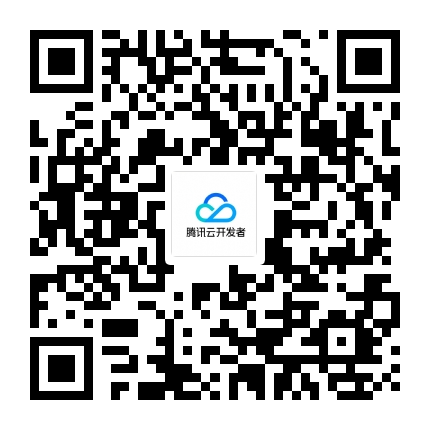python的元组、字典介绍,变量引用以及可变类型不可变类型
Python的元组与列表类似,不同之处在于元组的元素不能修改。元组使用小括号,列表使用方括号。
>>> aTuple = ('et',77,99.9)
>>> aTuple
('et',77,99.9)
访问元组
修改元组
说明: python中不允许修改元组的数据,包括不能删除其中的元素。
元组的内置函数count, index
index和count与字符串和列表中的用法相同
>>> a = ('a', 'b', 'c', 'a', 'b')
>>> a.index('a', 1, 3) # 注意是左闭右开区间
Traceback (most recent call last):
File "", line 1, in
ValueError: tuple.index(x): x not in tuple
>>> a.index('a', 1, 4)
3
>>> a.count('b')
2
>>> a.count('d')
0
字典介绍
想一想:
如果有列表
nameList = ['xiaoZhang', 'xiaoWang', 'xiaoLi'];
需要对"xiaoWang"这个名字写错了,通过代码修改:
nameList[1] = 'xiaoxiaoWang'
如果列表的顺序发生了变化,如下
nameList = ['xiaoWang', 'xiaoZhang', 'xiaoLi'];
此时就需要修改下标,才能完成名字的修改
nameList[0] = 'xiaoxiaoWang'
有没有方法,既能存储多个数据,还能在访问元素的很方便就能够定位到需要的那个元素呢?
答:字典
另一个场景:学生信息列表,每个学生信息包括学号、姓名、年龄等,如何从中找到某个学生的信息?
>>> studens = [[1001, "王宝强", 24], [1002, "马蓉", 23], [1005, "宋喆",24], ...]
变量info为字典类型:info = {'name':'班长', 'id':100, 'sex':'f', 'address':'地球亚洲中国北京'}
说明:字典和列表一样,也能够存储多个数据,列表中找某个元素时,是根据下标进行的
字典中找某个元素时,是根据'名字'(就是冒号:前面的那个值,例如上面代码中的'name'、'id'、'sex')
字典的每个元素由2部分组成,键:值。例如 'name':'班长' ,'name'为键,'班长'为值
根据键访问值
info = {'name':'班长', 'id':100, 'sex':'f', 'address':'地球亚洲中国北京'}
print(info['name'])
print(info['address'])
结果: 班长 地球亚洲中国北京
若访问不存在的键,则会报错:
>>> info['age']
Traceback (most recent call last):
File "", line 1, in
KeyError: 'age'
在我们不确定字典中是否存在某个键而又想获取其值时,可以使用get方法,还可以设置默认值:
>>> age = info.get('age')
>>> age #'age'键不存在,所以age为None
>>> type(age)
>>> age = info.get('age', 18) # 若info中不存在'age'这个键,就返回默认值18
18
字典的常见操作1:修改元素
字典的每个元素中的数据是可以修改的,只要通过key找到,即可修改
添加元素:如果在使用 变量名['键'] = 数据 时,这个“键”在字典中,不存在,那么就会新增这个元素
删除元素
对字典进行删除操作,有以下几种:
del: del删除指定的元素 删除整个字典
clear() clear清空整个字典
字典的常见操作2
len()
测量字典中,键值对的个数
返回一个包含字典所有KEY的列表
values
返回一个包含字典所有value的列表
items
返回一个包含所有(键,值)元祖的列表
has_key
dict.has_key(key)如果key在字典中,返回True,否则返回False
遍历
通过for ... in ...:的语法结构,我们可以遍历字符串、列表、元组、字典等数据结构。
注意python语法的缩进
字符串遍历
>>> a_str = "hello itcast"
>>> for char in a_str:
... print(char,end=' ')
...
h e l l o i t c a s t
列表遍历
>>> a_list = [1, 2, 3, 4, 5]
>>> for num in a_list:
... print(num,end=' '
...
1 2 3 4 5
元组遍历
>>> a_turple = (1, 2, 3, 4, 5)
>>> for num in a_turple:
... print(num,end=" ")
1 2 3 4 5
字典遍历
遍历字典的key(键)
遍历字典的value(值)
遍历字典的项(元素)
遍历字典的key-value(键值对)
公共方法
运算符
运算符Python 表达式结果描述支持的数据类型
+[1, 2] + [3, 4][1, 2, 3, 4]合并字符串、列表、元组
*'Hi!' * 4['Hi!', 'Hi!', 'Hi!', 'Hi!']复制字符串、列表、元组
in3 in (1, 2, 3)True元素是否存在字符串、列表、元组、字典
not in4 not in (1, 2, 3)True元素是否不存在字符串、列表、元组、字典
+
>>> "hello " + "itcast"
'hello itcast'
>>> [1, 2] + [3, 4]
[1, 2, 3, 4]
>>> ('a', 'b') + ('c', 'd')
('a', 'b', 'c', 'd')
*
>>> 'ab'*4
'ababab'
>>> [1, 2]*4
[1, 2, 1, 2, 1, 2, 1, 2]
>>> ('a', 'b')*4
('a', 'b', 'a', 'b', 'a', 'b', 'a', 'b')
in
>>> 'itc' in 'hello itcast'
True
>>> 3 in [1, 2]
False
>>> 4 in (1, 2, 3, 4)
True
>>> "name" in {"name":"Delron", "age":24}
True
注意,in在对字典操作时,判断的是字典的键
python内置函数
Python包含了以下内置函数
序号方法描述
1cmp(item1, item2)比较两个值
2len(item)计算容器中元素个数
3max(item)返回容器中元素最大值
4min(item)返回容器中元素最小值
5del(item)删除变量
cmp
>>> cmp("hello", "itcast")
-1
>>> cmp("itcast", "hello")
1
>>> cmp("itcast", "itcast")
0
>>> cmp([1, 2], [3, 4])
-1
>>> cmp([1, 2], [1, 1])
1
>>> cmp([1, 2], [1, 2, 3])
-1
>>> cmp({"a":1}, {"b":1})
-1
>>> cmp({"a":2}, {"a":1})
1
>>> cmp({"a":2}, {"a":2, "b":1})
-1
注意:cmp在比较字典数据时,先比较键,再比较值。
len
>>> len("hello itcast")
12
>>> len([1, 2, 3, 4])
4
>>> len((3,4))
2
>>> len({"a":1, "b":2})
2
注意:len在操作字典数据时,返回的是键值对个数。
max
>>> max("hello itcast")
't'
>>> max([1,4,522,3,4])
522
>>> max({"a":1, "b":2})
'b'
>>> max({"a":10, "b":2})
'b'
>>> max({"c":10, "b":2})
'c'
del
del有两种用法,一种是del加空格,另一种是del()
>>> a = 1
1
>>> del a
Traceback (most recent call last):
File "", line 1, in
NameError: name 'a' is not defined
>>> a = ['a', 'b']
>>> del a[0]
['b']
>>> del(a)
Traceback (most recent call last):
File "", line 1, in
NameError: name 'a' is not defined
多维列表/元祖访问的示例
>>> tuple1 = [(2,3),(4,5)]
>>> tuple1[0]
(2, 3)
>>> tuple1[0][0]
2
>>> tuple1[0][2]
Traceback (most recent call last):
File "", line 1, in
IndexError: tuple index out of range
>>> tuple1[0][1]
3
>>> tuple1[2][2]
Traceback (most recent call last):
File "", line 1, in
IndexError: list index out of range
>>> tuple2 = tuple1+[(3)]
>>> tuple2
[(2, 3), (4, 5), 3]
>>> tuple2[2]
3
>>> tuple2[2][0]
Traceback (most recent call last):
File "", line 1, in
TypeError: 'int' object is not subscriptable
引用
想一想
>>> a = 1
>>> b = a
1
>>> a = 2
2
请问此时b的值为多少?
>>> a = [1, 2]
>>> b = a
[1, 2]
>>> a.append(3)
[1, 2, 3]
请问此时b的值又是多少?
引用
在python中,值是靠引用来传递来的。
我们可以用id()来判断两个变量是否为同一个值的引用。 我们可以将id值理解为那块内存的地址标示。
>>> a = 1
>>> b = a
>>> id(a)
13033816
>>> id(b) # 注意两个变量的id值相同
13033816
>>> a = 2
>>> id(a) # 注意a的id值已经变了
13033792
>>> id(b) # b的id值依旧
13033816
>>> a = [1, 2]
>>> b = a
>>> id(a)
139935018544808
>>> id(b)
139935018544808
>>> a.append(3)
[1, 2, 3]
>>> id(a)
139935018544808
>>> id(b) # 注意a与b始终指向同一个地址
139935018544808
可变类型与不可变类型
可变类型,值可以改变:列表 list 、字典 dict、不可变类型
值不可以改变:数值类型 int, long, bool, float、字符串 str、元组 tupl
- 发表于:
- 原文链接:https://kuaibao.qq.com/s/20180709A09P9L00?refer=cp_1026
- 腾讯「腾讯云开发者社区」是腾讯内容开放平台帐号(企鹅号)传播渠道之一,根据《腾讯内容开放平台服务协议》转载发布内容。
- 如有侵权,请联系 cloudcommunity@tencent.com 删除。

